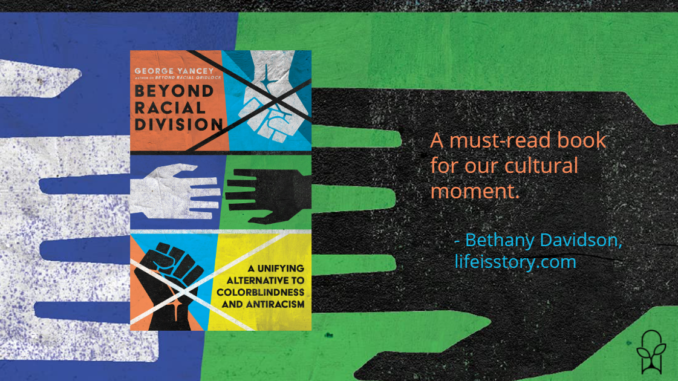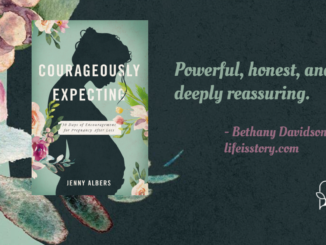
Published by IVP on March 8, 2022
Genres: Non-Fiction, Christian Life, Racial Reconciliation
Buy on Amazon
Goodreads

Efforts at colorblindness and antiracism have not been very effective in addressing racial tensions in the United States. Colorblindness ignores the realities of race and the history of injustice. On the other hand, antiracism centers racial concerns and in so doing often alienates people who need to be involved in the process.
Sociologist George Yancey offers an alternative approach to racial relations where all parties contribute and are mutually accountable to one another for societal well-being. He provides empirical rationale for how collaborative conversations in a mutual accountability model can reduce racial division. History and societal complexity mean that different participants may have different kinds of responsibility, but all are involved in seeking the common good for all to thrive. Avoiding unilateral decisions that close off dialogue, Yancey casts a vision for moving beyond racial alienation toward a lifestyle and movement of collaborative conversation and mutuality.
In this unique, well-argued book, sociologist George Yancey pushes back against the excesses and inherent flaws in colorblindness and antiracism mindsets, arguing that we need to be able to engage in “collaborative conversations” to move forward towards genuine justice and healing. He writes from his vantage point as a Black man, and he also includes stories and perspectives from white people and other people of color throughout the book, showing how existing models for dealing with racial tension fall short and leave people out of the conversation when they are unwilling to ascribe to an ideology wholesale. Beyond Racial Division: A Unifying Alternative to Colorblindness and Antiracism recommends a “mutual accountability model” in which people discuss issues and try to reach solutions across racial lines, and Yancey provides a clear, nuanced rationale for why this will work better than current approaches.
Why Colorblindness and Antiracism Fail
Yancey explains that even though motivations behind colorblindness are often positive, efforts to treat everyone equally fall short when people ignore specific issues that people of color face in America. On the other hand, he argues that antiracism dooms itself at the start by relegating white people to a “kid’s table” where they can’t have a say in strategies or outcomes, teaching them that their voices are irrelevant unless they are promoting the views of black antiracists. He argues that this perspective only worsens racial alienation, and can also create new abuses of power within a new hierarchy. He gives the hypothetical example of a black man getting away with sexual harassment against a white woman, simply because the man can claim that she is a racist attacking him with a nasty stereotype. Just because someone has been victimized doesn’t mean that they won’t victimize others.
Yancey also contends that it is impossible to reach long-term solutions without addressing human depravity. Neither colorblindness nor antiracism account for the sinfulness of human beings, their willingness to abuse power, and the likelihood of people advocating for the social solutions that best fit and benefit them, regardless of the impact that these changes would have on others. However, in a mutual accountability approach to racial issues, people have to communicate and take others’ opinions into account, instead of trying to force their solutions on everyone else. Yancey also points out that even if your solution really is the best, if a large subset of the population disagrees with you, then they will sabotage your efforts to implement that plan.
Empirical Evidence
Throughout Beyond Racial Division, Yancey provides real-world, empirical examples to prove his points. For example, he references current school board battles to illustrate the ineffectiveness of forcing a new plan without taking other stakeholders’ voices into account, and he shares statistics related to the failures of organization-mandated diversity trainings, in comparison to voluntary diversity trainings. Evidence shows that antiracism diversity trainings often have the opposite effect of what the organizers intend, creating resentment without effecting any positive change in the company’s culture or hiring and promotion practices. I was surprised to learn that there are already longitudinal studies on this, and it’s telling that so much of this information isn’t openly shared with the public, since there are such strong business interests in current models of diversity conferences and diversity trainings.
Yancey also provides empirical evidence for his alternative model. Although there are not many studies related to collaborative conversations in a racial context, hopeful evidence abounds in studies about other spheres of life, and of course studies show that moral persuasion leads to far better results than condemnation, accusation, and public shaming. At the end, Yancey writes about the work that is yet to be done to advocate for and provide evidence in favor of this third path, and he hopes that people will focus academic inquiry, popular writing, and personal conversations about race on this framework in the future to test it out and share it.
Audience and Reach
Yancey writes from a Christian perspective, but this book is accessible to people of all beliefs. One chapter specifically focuses on the theological underpinnings of his mutual accountability framework, and he speaks to Christians directly there, but he wrote the rest of the book with a general audience in mind. I hope that this book will gain a wide reading, and I plan to recommend it for purchase in my library system. I found this book extremely helpful, clear, and timely, and Yancey embodies his recommended strategy well by writing in a nuanced, thoughtful way that takes other people’s opinions seriously. He explains why people believe in colorblindness or antiracism, acknowledges the good intentions of most people, and engages with people’s best arguments for their views, instead of picking on the weakest or most extreme elements.
I highly recommend Beyond Racial Division to anyone who is concerned about racial alienation, especially if they feel burnt out on existing models or feel like they must ascribe to a wholesale ideology to speak about racial issues in their setting. This is a must-read book for our cultural moment, and it is excellent for both individual and group reading. Also, because this book is so fair and well-balanced, people can recommend this to family members, friends, and colleagues who hold strongly to either colorblindness or antiracism views, without the book arguing for an opposite extreme. This book is full of thoughtful, nuanced, and well-argued perspectives, and different readers will have varying takeaways. The book offers opportunities for self-reflection and growth, regardless where someone lands ideologically, and I hope that it will receive the wide reading that it deserves.



